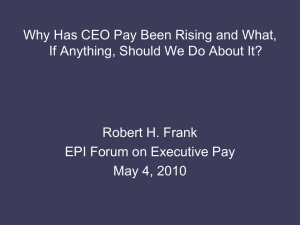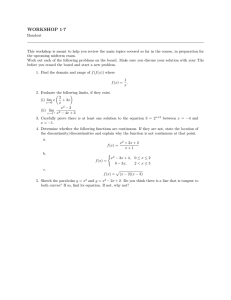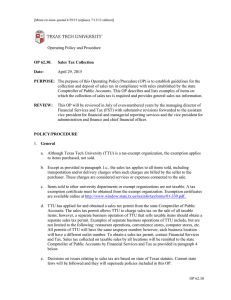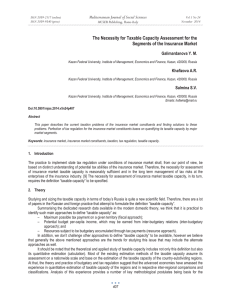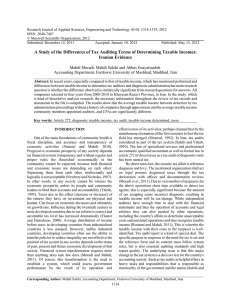WORKSHOP 1·5
advertisement
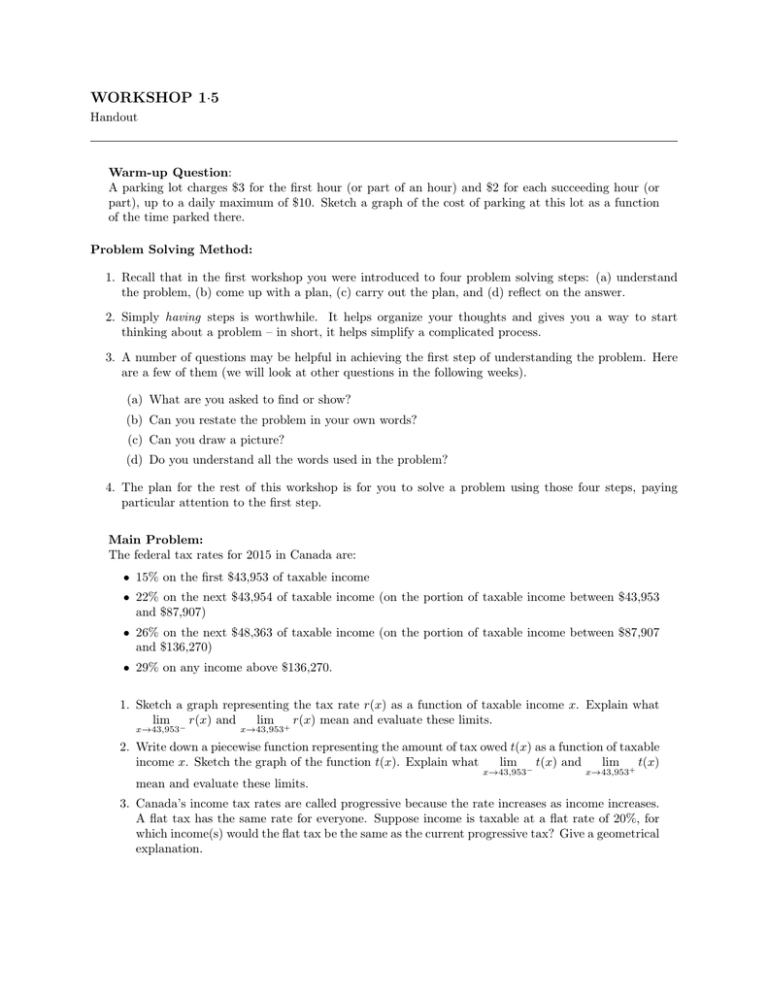
WORKSHOP 1·5 Handout Warm-up Question: A parking lot charges $3 for the first hour (or part of an hour) and $2 for each succeeding hour (or part), up to a daily maximum of $10. Sketch a graph of the cost of parking at this lot as a function of the time parked there. Problem Solving Method: 1. Recall that in the first workshop you were introduced to four problem solving steps: (a) understand the problem, (b) come up with a plan, (c) carry out the plan, and (d) reflect on the answer. 2. Simply having steps is worthwhile. It helps organize your thoughts and gives you a way to start thinking about a problem – in short, it helps simplify a complicated process. 3. A number of questions may be helpful in achieving the first step of understanding the problem. Here are a few of them (we will look at other questions in the following weeks). (a) What are you asked to find or show? (b) Can you restate the problem in your own words? (c) Can you draw a picture? (d) Do you understand all the words used in the problem? 4. The plan for the rest of this workshop is for you to solve a problem using those four steps, paying particular attention to the first step. Main Problem: The federal tax rates for 2015 in Canada are: • 15% on the first $43,953 of taxable income • 22% on the next $43,954 of taxable income (on the portion of taxable income between $43,953 and $87,907) • 26% on the next $48,363 of taxable income (on the portion of taxable income between $87,907 and $136,270) • 29% on any income above $136,270. 1. Sketch a graph representing the tax rate r(x) as a function of taxable income x. Explain what lim − r(x) and lim + r(x) mean and evaluate these limits. x→43,953 x→43,953 2. Write down a piecewise function representing the amount of tax owed t(x) as a function of taxable income x. Sketch the graph of the function t(x). Explain what lim − t(x) and lim + t(x) x→43,953 x→43,953 mean and evaluate these limits. 3. Canada’s income tax rates are called progressive because the rate increases as income increases. A flat tax has the same rate for everyone. Suppose income is taxable at a flat rate of 20%, for which income(s) would the flat tax be the same as the current progressive tax? Give a geometrical explanation.




